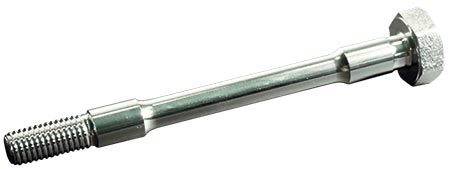
The Swiss Federal Railways (SBB) was faced with challenges to stabilise its system of bolts that were causing high maintenance and downtime costs.
Originally hexagonal bolts had been used – type DIN 931, 10.9, M12 x 140. The bolts were applied in the wheel drive system and due to the load that was applied, transverse to the bolt axis, the bolts became instable after a short time in use. Even though there was no security risk at any time, SBB was highly interested in finding an efficient solution.
After analysing the reasons for the problem, the engineering teams of SBB and Bossard AG worked in very close cooperation to develop a stable bolted connection that also increased functional safety.

Various solutions were originally considered - for instance using dowel pins to improve the force transmission, but since the spare parts need to be interchangeable, this turned out not to be the optimal approach. Finally, the solution was the use of a bolt with waisted shank, which had a lot of advantages. There is a low level of loss in tightening force when setting up the connection. That leads to considerable security against it coming unscrewed by itself. The low level of sensitivity to bending reduces the additional forces that occur during thermic strain.
Also its ability to change shape plastically ensures a high degree of safety when tightening up over and beyond the yield point. Optimised mating surfaces mean that the torsional or transverse stresses in the waisted shank can be eliminated. Finally, the durability is substantially greater than for conventional standard bolts, even under a vibrating load.

“Since we have used bolts with waisted shank, we have increased the availability of the locomotives,” says Hans-Peter Luethi, strategic purchasing at SBB. “At the same time, we could significantly reduce maintenance and repair costs.”
Furthermore, the bolts with waisted shank prevent displacement against each other. A larger diameter in the segment under load leads to increased shearing resistance. The elastic thin shaft guarantees high safety when tightening beyond the yield point. Moreover there is no loading on curves in the area of the thread and head.

Having spent a decade in the fastener industry experiencing every facet – from steel mills, fastener manufacturers, wholesalers, distributors, as well as machinery builders and plating + coating companies, Claire has developed an in-depth knowledge of all things fasteners.
Alongside visiting numerous companies, exhibitions and conferences around the world, Claire has also interviewed high profile figures – focusing on key topics impacting the sector and making sure readers stay up to date with the latest developments within the industry.





